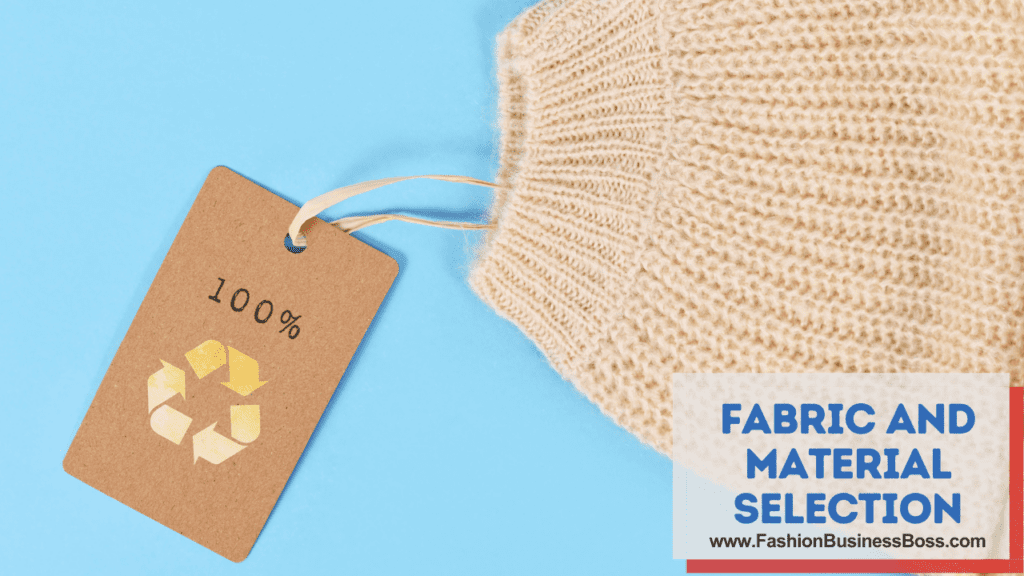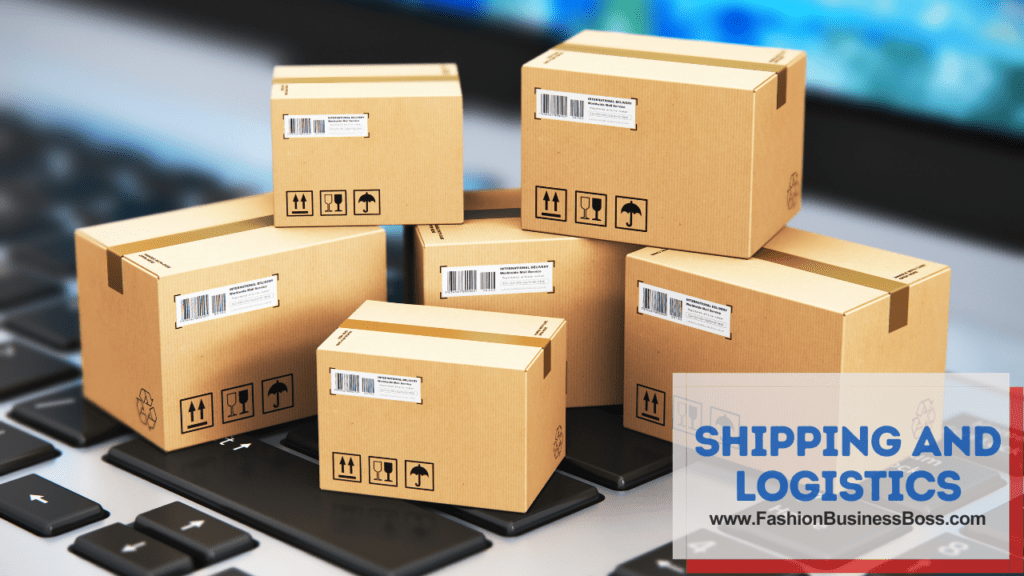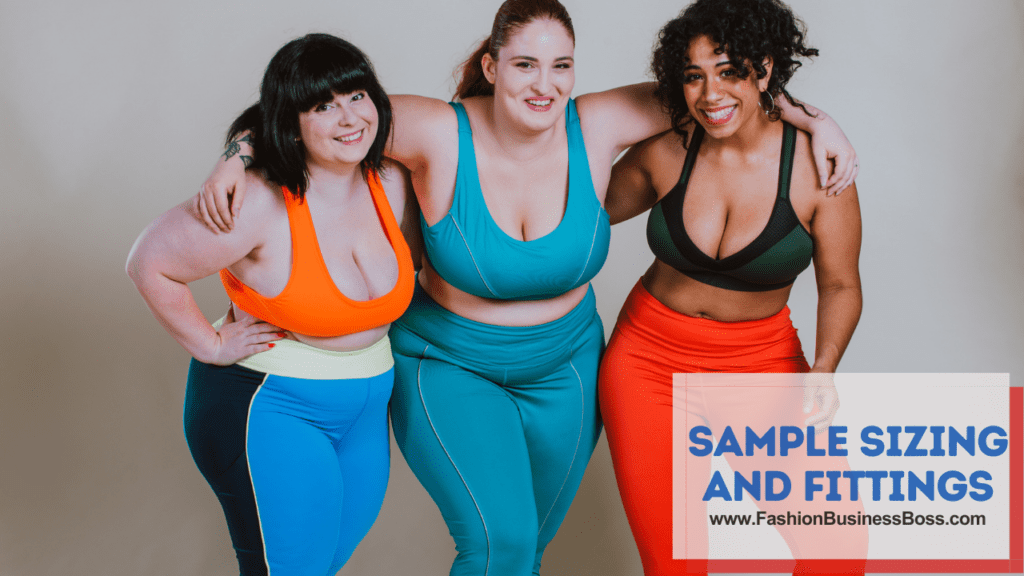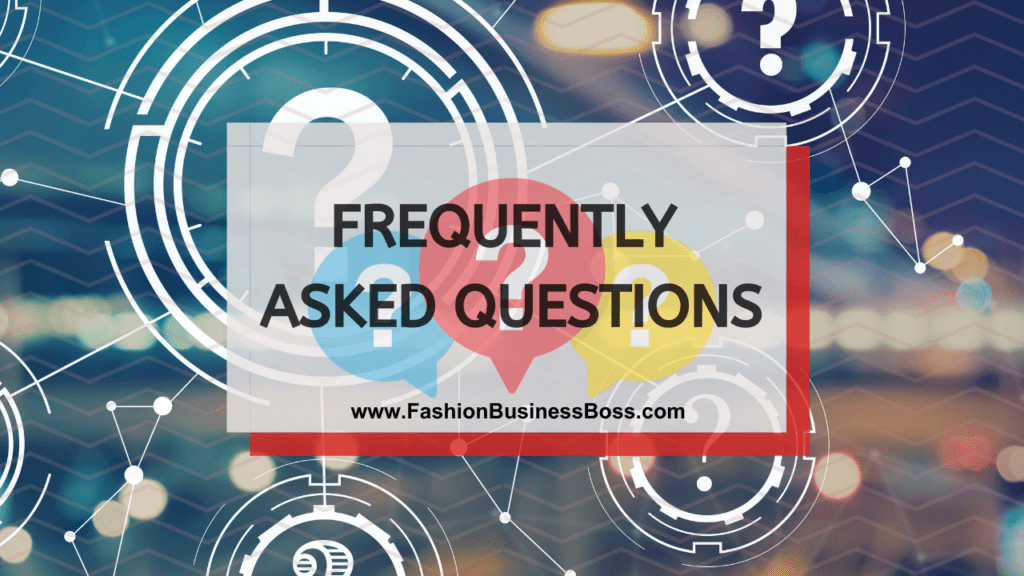Launching a clothing brand can be a dream come true for many fashion enthusiasts and entrepreneurs. However, turning this dream into a reality involves more than just creativity and passion; it requires a clear understanding of the financial aspects involved.
To start a clothing brand, you’ll need a budget that covers materials, packaging, shipping, and more.
In this article, we’ll explore the key factors that determine how much money you need to start your very own clothing brand.
Fabric and Material Selection

Selecting the right fabrics and materials for your clothing line plays a crucial role in determining your startup costs. The kind and quality of materials you opt for will directly affect your budget. High-quality or premium fabrics often come with a higher price tag, but they can elevate the overall perception of your brand.
To break it down in simpler terms, imagine you’re starting a t-shirt brand. You have two choices: standard cotton fabric or an organic, ethically-sourced cotton fabric. The latter, while more expensive, offers benefits like sustainability and quality.
Now, let’s put numbers into perspective. Standard cotton might cost you $2 per t-shirt, whereas the premium organic fabric could be around $5 per t-shirt. If you plan to produce 1,000 t-shirts, you’re looking at a $3,000 difference in material costs alone. This decision directly impacts your overall startup budget.
Read more about: Build Your Own Clothing Brand: Empowering Fashion Visionaries
Sample Development
Creating samples is a crucial step in the clothing brand journey. It’s like making a trial version of your clothing to check if everything’s just right before making a lot of them. This process includes making prototypes or early versions of your designs and fine-tuning them to meet your standards.
Let’s talk about money. Developing samples isn’t free. For instance, if you’re designing a new type of jacket, you might need to pay a skilled tailor or manufacturer to create a prototype. This cost can vary depending on the complexity of your design and the materials used. On average, sample development can range from a few hundred to several thousand dollars.
Think of it as a necessary investment to make sure your final products meet your expectations and customers’ needs. Skipping this step could lead to costly mistakes in the long run, so it’s worth budgeting for it upfront.
Packaging and Labels
Packaging and labels are essential for your clothing brand, and they also come with associated costs. These elements contribute to the overall customer experience and can be likened to the wrapping of a gift; it matters more than you might think.
Regarding the cost, designing and producing packaging materials and labels do incur expenses. For instance, if you wish to have custom shopping bags, clothing tags, and branded packaging, you’ll need to allocate funds for design, printing, and production. The precise cost can vary widely based on factors such as the complexity of your design, the materials used, and the quantity you intend to order.
To offer a cost estimate, creating custom packaging and labels for a small clothing brand might range from a few hundred to a few thousand dollars. Keep in mind that these costs can increase as your brand expands and your order quantities grow.
Shipping and Logistics

Considering shipping and logistics is fundamental when setting up your clothing brand. It’s all about moving stuff – getting your materials and sending out orders to customers. International shipping, especially, can be a bit heavy on the wallet.
Now, let’s get into the numbers. Shipping costs can take a noticeable chunk of your budget. When you’re sourcing materials for your clothing, you’ll likely need to pay for shipping those materials to your location. When you start selling, you’ll have to ship your products to customers. These costs can vary based on factors like the distance, weight, and shipping method.
To give you a rough idea, shipping materials might cost a few hundred to a couple of thousand dollars, depending on the size of your orders and how far they need to travel. International shipping, as mentioned, can be more expensive due to customs, duties, and longer distances.
Read more about: Building a Fashion Brand: How to Start Your Clothing Line
Photography and Visual Content
Photography and visual content hold significant importance when it comes to promoting your clothing brand. They play a crucial role in showcasing your products to potential customers. Think of it as the way you present your clothing to the world.
Now, let’s talk about money. Achieving high-quality product images and visual content involves costs. You’ll likely need to budget for professional photography and graphic design services. These professionals have the skills and equipment to make your clothing look its best, whether it’s for your website, social media, or marketing materials.
To provide you with a ballpark figure, the cost of professional photography and graphic design services can vary widely. For a small clothing brand, this could range from a few hundred to a few thousand dollars, depending on the scope of the work and the professionals’ rates.
Trademark and Copyright Protection
Safeguarding your brand’s intellectual property through trademarks and copyrights is a critical step in establishing and defending your brand’s identity. It’s about securing your brand’s unique aspects from being used without your permission.
Now, let’s address the financial side. Registering and protecting your trademarks and copyrights involves legal processes and fees. These expenses can include hiring attorneys or legal professionals to guide you through the process and cover filing fees with government agencies.
To provide a cost estimate, the fees for trademark registration and copyright protection can vary. For trademarks, expect to budget several hundred to a few thousand dollars. Copyright registration, on the other hand, is generally more affordable, with fees typically in the range of tens to hundreds of dollars.
Sample Sizing and Fittings

Achieving the right fit for your clothing is crucial for customer satisfaction. This involves making sure your clothing sizes are just right, so they fit comfortably on those who wear them. It’s similar to making sure a shoe fits perfectly before buying it.
Now, let’s discuss the financial aspect. To get the fit right, you may need to invest in sample sizing and fittings. This process can include hiring fit models who represent your target customers and working with tailors to adjust the patterns and measurements. These steps ensure your clothing fits well and looks flattering.
In terms of cost, sample sizing and fittings can vary depending on the complexity of your designs and the number of adjustments needed. For a small clothing brand, this expense might range from a few hundred to a few thousand dollars, but it’s a crucial part of ensuring your products meet your quality standards.
Read more about: Breaking into Fashion: Starting Your Own Online Clothing Brand
Returns and Exchanges
Planning for returns and exchanges is a practical step in the fashion industry. It’s like preparing for the occasional rainy day; it’s something that happens, and it’s wise to be ready for it.
Now, let’s talk about the financial side. Returns and exchanges do come with costs. You may need to refund customers for returned items or provide replacement products. These costs can include not only the value of the item but also the shipping expenses associated with sending it back and forth.
To provide an estimate, return and exchange costs can vary widely depending on your brand’s policies and the volume of sales. For a small clothing brand, this could range from a few hundred to a few thousand dollars annually.
Marketing Collateral
Investing in marketing collateral is an important part of promoting your clothing brand effectively. It’s not just about online ads; it’s also about creating physical materials that leave a memorable mark.
Now, let’s discuss the financial aspect. Developing marketing collateral involves costs. This can include designing and printing materials like lookbooks, business cards, flyers, and promotional brochures. The precise expenses can vary depending on the quantity, quality, and complexity of the materials.
To give you an approximate idea, for a small clothing brand, creating marketing collateral may range from a few hundred to a couple of thousand dollars. This investment is important because it helps you connect with customers both online and offline, leaving a lasting impression that can lead to increased brand awareness and sales.
Professional Services

In the course of establishing your clothing brand, you may find it necessary to enlist the expertise of professionals. These individuals possess specialized skills that can greatly benefit your business. It’s similar to seeking help from experts when facing a challenge in your personal life.
Now, let’s delve into the financial aspect. Engaging professional services does come with costs. Depending on your specific requirements, you might need the assistance of professionals like accountants, lawyers, or marketing consultants. These experts offer their services at varying rates, depending on the complexity and duration of the work involved.
To provide you with a general cost estimate, hiring professional services can range from a few hundred to several thousand dollars, depending on the scope and scale of your clothing brand.
Read more about: Build Your Own Clothing Brand: Empowering Fashion Visionaries
Wholesale and Retail Partnerships
When you intend to sell your clothing through retailers or wholesalers, it’s important to factor in the expenses related to these partnerships. These collaborations can be compared to teaming up with others to achieve common goals.
Now, let’s discuss the financial side. Partnering with retailers or wholesalers may involve various costs. You might need to invest in marketing support to promote your products within their network, which can include creating marketing materials or running joint advertising campaigns. These partnerships often come with commissions or fees that are typically a percentage of the sales generated through them.
To provide you with a general cost estimate, the expenses associated with wholesale and retail partnerships can vary significantly based on the terms of the agreements and the scale of the partnership. These costs might range from a few hundred to several thousand dollars, depending on your specific arrangements.
Conclusion
Starting a clothing brand is a fulfilling but financially demanding endeavor. The total amount required can vary significantly. With dedication, creativity, and adequate funding, your clothing brand can flourish in the competitive fashion industry.
Frequently Asked Questions

Q: What is the typical initial investment required for launching a clothing brand?
A: The startup costs for a clothing brand can vary significantly, depending on factors such as production scale, marketing strategy, and brand positioning.
Q: Is it necessary to establish a physical retail presence when starting a clothing brand?
A: No, physical stores are not mandatory. Many clothing brands operate online, choosing e-commerce as their primary sales channel.
Q: What legal considerations should be taken into account when initiating a clothing brand?
A: Important legal aspects include trademark registration to protect your brand, adherence to local business regulations, and compliance with labeling requirements to ensure legal compliance.
Q: How can I determine the right budget for my clothing brand’s startup costs?
A: Calculating your startup budget should involve a thorough assessment of your specific business plan, including production, marketing, and operational expenses. Consider seeking advice from industry experts or financial professionals to help you arrive at an accurate budget estimate.
Q: Are there any cost-saving strategies for launching a clothing brand?
A: Yes, cost-saving strategies include starting with a smaller product line, exploring sustainable and economical sourcing options for materials, and utilizing social media and digital marketing for low-cost promotion. Conducting thorough market research can also help identify potential cost-saving opportunities.
To learn more about starting your own clothing business, check out my startup documents here.
Please note that the contents of this blog are for informational and entertainment purposes only and should not be construed as legal advice. Any action taken based on the information provided in this blog is solely at your own risk. Additionally, all images used in this blog are generated under the CC0 license of Creative Commons, which means they are free to use for any purpose without attribution.

Meet Shawn Chun: Entrepreneur and Fashion Business Fan.
I’m a happy individual who happens to be an entrepreneur. I have owned several types of businesses in my life from a coffee shop to an import and export business to an online review business plus a few more and now I create online resources for those interested in starting new ventures. It’s demanding work but I love it. I do it for those passionate about their business and their goals. That’s why when I meet a designer or boutique owner at a craft fair, farmers market, retail location or anywhere else I see myself. I know how hard the struggle is to retain clients, find good employees and keep the business growing all while trying to stay competitive.
That’s why I created Fashion Business Boss: I want to help fashion business owners like you build a thriving business that brings you endless joy and supports your ideal lifestyle.

